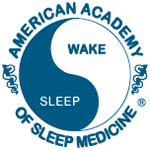
A variety of everyday problems can be maddeningly difficult on little sleep. Minor conflicts may cause a sleep-deprived person to feel frustration, anger or even sadness. Slight disruptions become emotional eruptions in the absence of restful sleep.
For teenagers and young adults who already grapple with heightened hormones, a string of sleepless nights can turn them into walking time-bombs. Mental illness is a real risk for many people less than 24 years of age who don’t get enough sleep, according to a new study in the September issue of the journal SLEEP.
The study reports that every hour of sleep loss significantly raises the risk of emotional distress, a combination of high levels of depressive and anxious symptoms. The risk is most relevant for people with pre-existing mental health issues or a history of depression.
Young adults who otherwise have no mental health history can develop mental distress by severely limiting sleep over a long period of time. The study found people with no psychological distress who slept five hours or less are three times more likely to be distressed a year later.
The study design involved 20,000 Australians aged 17 to 24. Each participant completed a sleep diary by listing the amount of hours slept per night over the course of a month. Subjects also answered the Kessler Psychological Distress Scale (K10), a mental assessment that includes questions about feeling tired, nervous, hopeless, restless, depressed, sad and worthless.
A randomly selected group consisting of about 10 percent of the participants completed a follow-up survey about a year later. Approximately 1 in 5 young adults who responded slept fewer than seven hours per night. Less than two percent were extremely short sleepers with less than five hours per night.
Mental health and psychological stress is a serious concern for young adults of any nation. The U.S. government estimates nearly 1 in 5 people between the ages of 18 and 25 years of age experienced serious psychological distress in the past year.
There’s been much discussion this early September about the risks related to insomnia and short sleep duration. A widely-reported study linked long-term insomnia to death for middle age males. Another study published in the same journal focused on teenage sleep patterns and suggested a relationship between sleep length and obesity. It concluded teenagers who sleep less than eight hours a night usually have unhealthier diets, consisting of fatty foods and frequent snacks.
Teenagers and young adults need more sleep than their parents or older siblings yet many in the age group are inclined to stay up late due to natural night-owl tendencies. High levels of stress and numerous distractions such as cell phones and video games also keep young adults from getting to bed at a decent hour.
The good news is after high-school, many have a more flexible schedule that can suit their sleep needs. This is especially the case for college students, who can avoid early morning classes if they wish. There’s no mental harm in sleeping too much. The study reports participants who reported sleep durations of more than nine hours showed no heightened mental distress.
Image by Andi Jetaime
 The Food and Drug Administration and the Consumer Product Safety Commission warn parents to stop using infant sleep positioners. The soft fabric devices claim to help babies safely sleep on their back, yet at least 12 children have rolled over and suffocated or became trapped between the positioner and the side of the crib. The federal agencies have received dozens of additional reports of children who were placed on a sleep positioner and were later found lying in potentially dangerous positions.
The Food and Drug Administration and the Consumer Product Safety Commission warn parents to stop using infant sleep positioners. The soft fabric devices claim to help babies safely sleep on their back, yet at least 12 children have rolled over and suffocated or became trapped between the positioner and the side of the crib. The federal agencies have received dozens of additional reports of children who were placed on a sleep positioner and were later found lying in potentially dangerous positions.








 Snoring is especially prevalent in adults and a surprising number of their children also “saw logs.” Sleepeducation.com reports between 10 and 20 percent of American children snore.
Snoring is especially prevalent in adults and a surprising number of their children also “saw logs.” Sleepeducation.com reports between 10 and 20 percent of American children snore.  A variety of everyday problems can be maddeningly difficult on little sleep. Minor conflicts may cause a sleep-deprived person to feel frustration, anger or even sadness. Slight disruptions become emotional eruptions in the absence of restful sleep.
A variety of everyday problems can be maddeningly difficult on little sleep. Minor conflicts may cause a sleep-deprived person to feel frustration, anger or even sadness. Slight disruptions become emotional eruptions in the absence of restful sleep.


 Consider seeking cognitive-behavioral therapy for long-term insomnia, especially if you are a male. New research shows men who consistently get less than six hours of sleep are four times more likely to die.
Consider seeking cognitive-behavioral therapy for long-term insomnia, especially if you are a male. New research shows men who consistently get less than six hours of sleep are four times more likely to die.




